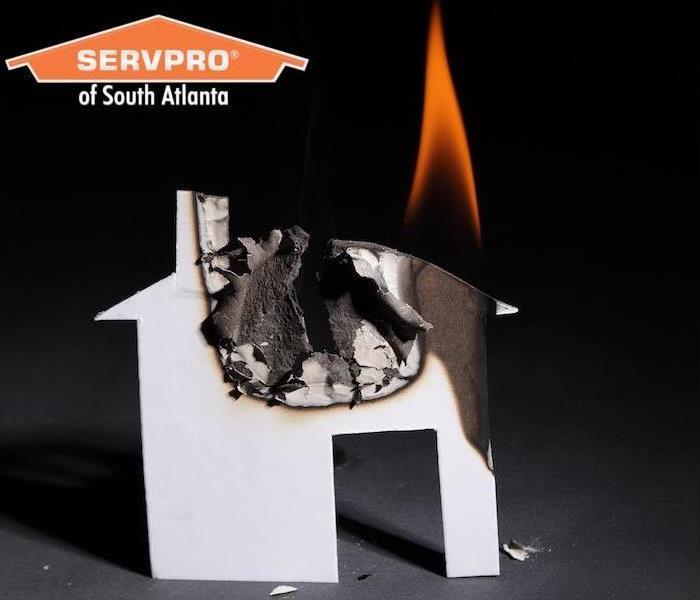How to Start a Fire and How to Put One Out | SERVPRO of South Atlanta
1/26/2022 (Permalink)
 If you have experience fire property damage call SERVPRO of South Atlanta. We make fire damage "Like it never even happened".
If you have experience fire property damage call SERVPRO of South Atlanta. We make fire damage "Like it never even happened".
Do you remember the tetrahedron from junior high math? A quick refresher—it’s like a pyramid, but with a triangular base instead of a square, all sides having the same area. Geometry lesson over; blog beginning now.
It seems random to bring a tetrahedron into your day, but surprisingly, it’s an important shape in regard to fire safety. Fire is made up of four elements we now call the fire tetrahedron, which are required for a fire to ignite.
Knowing these things is elemental to understanding the nature of fire, and subsequently, how to put one out.
The 4 Things a Fire Needs to Live
| Fuel | Something has to ignite. This is what will disappear after a fire—things like wood or other substances—anything that will burn or melt.
| Heat | The exact amount of necessary heat changes from substance to substance, but almost everything has a point at which it becomes unstable and liable to ignite.
| Oxygen | Fires respond to nearby oxygen to produce the fourth element of a fire, the chemical reaction; to put it simply, oxygen helps the fire grow by feeding it, in the meantime producing carbon monoxide as a byproduct.
| Chemical Chain Reaction | The presence of the first three elements combine to produce a special kind of chain reaction, which will keep occurring until something causes it to stop. Speaking of which…
The 4 Ways to Stop a Fire
| Cool It | This is probably your first thought when you think of stopping a fire. Firefighters use gallons upon gallons of water to cool the fuel (the thing the fire is burning) to a temperature that won’t sustain combustion. Cooling the fuel source to a state of thermal balance means heat is lost faster than heat can be generated. The fuel source will still be very hot, though, so a fair amount of water will boil and evaporate. That’s why it takes so much water to get a fire under control.
| Smother It | A fire can’t live if it can’t breathe. Depriving a fire of the oxygen it needs to continue smothers and kills it. This is simply demonstrated when you snuff a candle, but it can also be done chemically, as we’ll see below.
| Starve It | If a fire runs out of fuel or material to burn—it can’t continue to grow and will shrink out of existence. So one way to kill a fire is to remove the fuel it will head for next, rather than try to put out the elements which are currently on fire. This is often done to deal with wildfires, where a perimeter around the fire may be scorched on purpose in order to contain the fire and starve it out.
| Interrupt the Chain Reaction | Chemical agents like halon can put an end to fires by disrupting the needed chemical reaction that perpetuates them. Halon specifically is very effective, but it has a negative effect on the ozone layer. For this reason, no new halon is being produced, but the existing store can be purchased and sometimes recycled.
*If the fire tetrahedron makes a wreck of your home or business, we’re ready around the clock to help you recover. Contact SERVPRO of South Atlanta at (404) 505-1760 anytime for fast, thorough cleanup and recovery after a fire or visit www.SERVPROsouthatlanta.com for more information on our residential and commercial fire restoration services.






 24/7 Emergency Service
24/7 Emergency Service